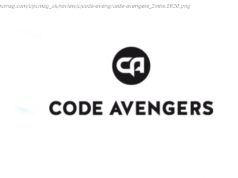Product not yet reviewed by PCMag Editors.
Even if it’s a Mac, your computer needs antivirus protection. Sure, Windows is a much more popular target, but Apple machines get hit with malware too, including really nasty variants like ransomware. If you don’t care to pay for antivirus protection on your Mac, consider Avira Free Antivirus for Mac. It doesn’t cost a penny, and it did well in tests by an independent lab.
When you launch Avira’s installer, it goes online to get the very latest code and malware signatures. Avira’s portrait-mode main window emphasizes a large, round graphic that reflects your security status. It’s green for protected and red if components are disabled. Below the status graphic is a big button that launches a scan. On the Apple MacBook Air 13-Inch I use for testing, the quick scan took less than a minute, and the full scan took 18 minutes. The average among current products is about five minutes for a quick scan and over 40 minutes for a full scan, so Avira is pretty fast.
Icons across the bottom of the main screen let you control scan scheduling, examine quarantined items, view recent activity, and manage your license. Scheduled scanning is enabled by default, once per week. You can add more scheduled quick or full scans, on a daily or weekly basis.
A few more icons down the left side offer quick access to simple settings. Seeing a control labeled Firewall, I got the impression that Avira includes a firewall component, like Intego, McAfee AntiVirus Plus (for Mac) , and Norton. However, this control simply turns the built-in macOS firewall component on and off.
Like the free Avira Antivirus on Windows, this product offers a raft of other Avira products for download. Most are free, and a few are free trials. For testing purposes, I added the browser protection components, but left the rest alone.
There’s a big range of prices for Mac-based antivirus support. At the high end, Intego lists at $99.99 per year to protect three Macs, and Symantec Norton Security Deluxe (for Mac) asks $89.99 per year for five cross-platform licenses. Granted, these two are security suites, going beyond what a simple antivirus utility offers.
The most common pricing plan among products we’ve reviewed is $39.99 per year for one license and $59.99 for three. As for Avira, you don’t pay a thing. Like Sophos Home (for Mac) , it’s totally free.
You do need a modern operating system to use this antivirus. Avira requires El Capitan (10.11) or better. If you’re using an old operating system, you may need to consider a different Mac antivirus. Sophos support runs back to Mountain Lion (10.8) , Webroot works on Lion (10.7) or better, and ESET Cyber Security (for Mac) goes all the way back to Snow Leopard (10.6) .
When evaluating Windows antivirus utilities for malware protection, I use a wide range of tests that I’ve developed over the years. I don’t have anything similar in hand for the macOS platform, and my many hand-coded testing tools are Windows-only. For Mac antivirus, I necessarily rely more heavily on the independent testing labs to know which products are effective. Fortunately, most of them do just fine.
Only two of the independent antivirus testing labs I follow include macOS products in their testing, and only one of those specifically tests Avira. AV-Comparatives certified Avira for malware protection, with the best possible scores. It achieved 100 percent protection against Mac-centric malware (to be fair, all of the products in this test reached 100 percent) .
Windows malware can’t infect Macs, but the Mac could act as a carrier, so AV-Comparatives also checks for detection of non-Mac malware. Avira also managed 100 percent in this test, as did several others. Mac-focused Intego Mac Internet Security X9 was the outlier, with just 28 percent detection.
When I challenged Avira to clean up a USB drive containing the samples from my own Windows-centered testing, it finished quickly, eliminating 82 percent of the samples. That’s better than most of the products I’ve tested in this way, though Webroot SecureAnywhere Antivirus (for Mac) caught 86 percent and Sophos managed 100 percent. In addition, Sophos jumped right in to scan the USB drive, without waiting for me to request a scan.
Phishing URLs are frauds that attempt to steal your login credentials by imitating sensitive websites. Phishing is a platform-agnostic crime—you can fall victim to fraud using absolutely any device that has a browser. That includes your Mac. Preventing access to such URLs, or to URLs containing malicious code, can be the first line of defense for an antivirus tool, whether it’s Mac or Windows antivirus.
Avira Free Antivirus does not in itself protect against malicious or fraudulent URLs, but it does give users easy access to Avira’s browser protection extensions for Chrome and Firefox. I installed the Chrome extension and proceeded to test Avira’s browser-based protection.
For this test, I gather the newest phishing URLs I can find, ones that haven’t yet been analyzed and blacklisted. I use one of my hand-coded tools to launch each URL and record results in four browsers, one protected by long-time antiphishing warrior Norton and one apiece by the security tools built into Chrome, Firefox, and Internet Explorer. As for the Mac product, well, my analysis tool is just for Windows, so I test by hand on the Mac.
For testing purposes, I discard any URL that causes an error message in any of the five browsers, and also discard any that aren’t undeniably fraudulent. Analyzing the remaining URLs, the undeniable phishing URLs, I found that Avira’s detection rate came in 47 percent lower than Norton’s, and that it also lagged behind all three browsers. That’s the lowest score among Mac antivirus utilities that include this kind of protection.
On the plus side, Avira marks up unsafe links in search results, so you can avoid clicking them. It doesn’t offer the detailed analysis that you get from Norton, but then, most of the time you don’t need to see those details.
Having heard for years that Macs don’t get malware, Mac users may find paying money for antivirus protection hard to justify. It’s a false assumption, but that still doesn’t mean that you have to pay.






